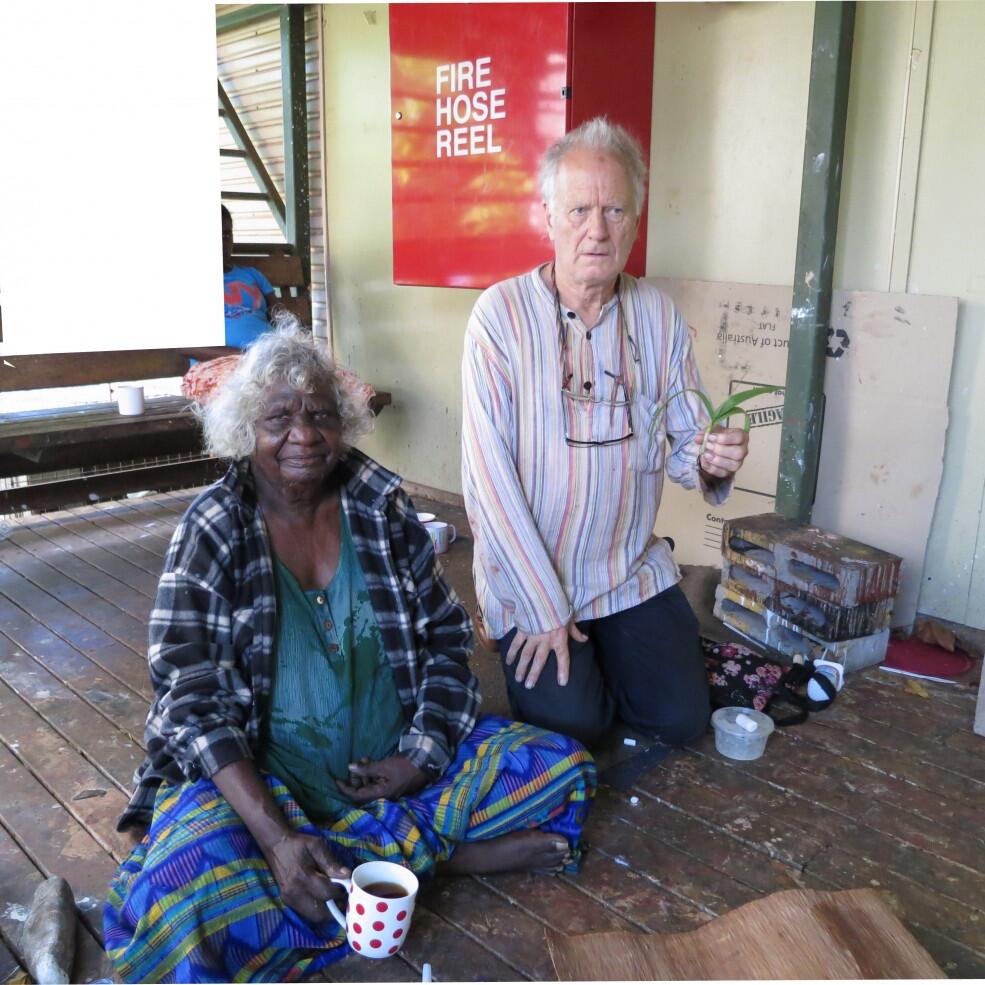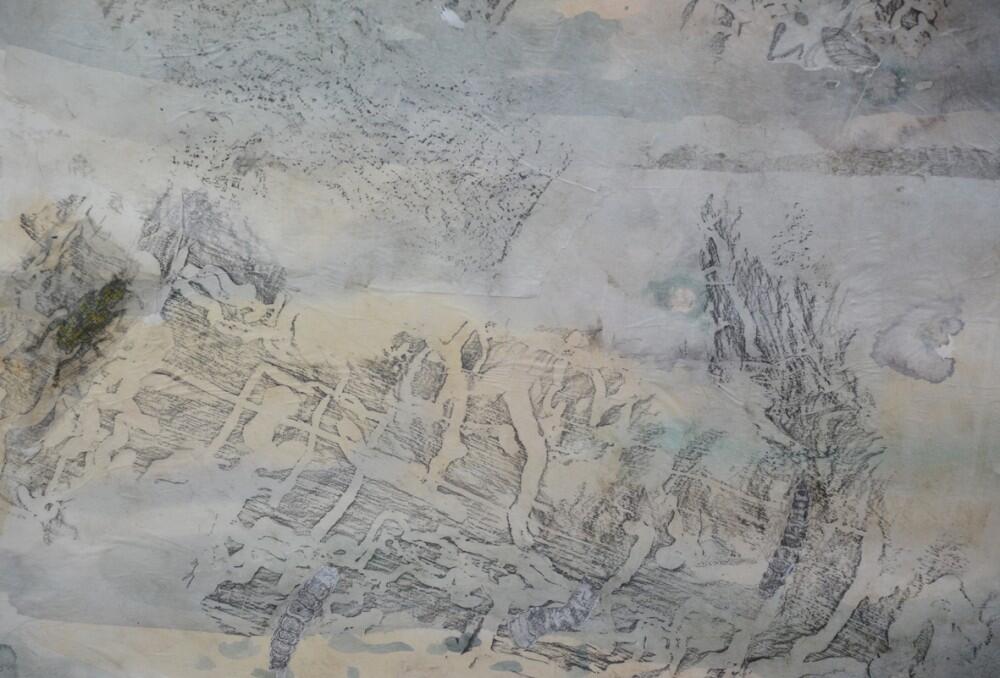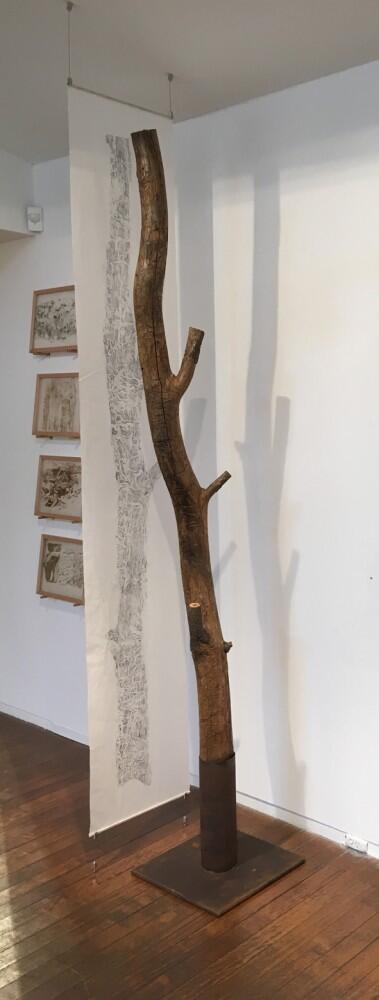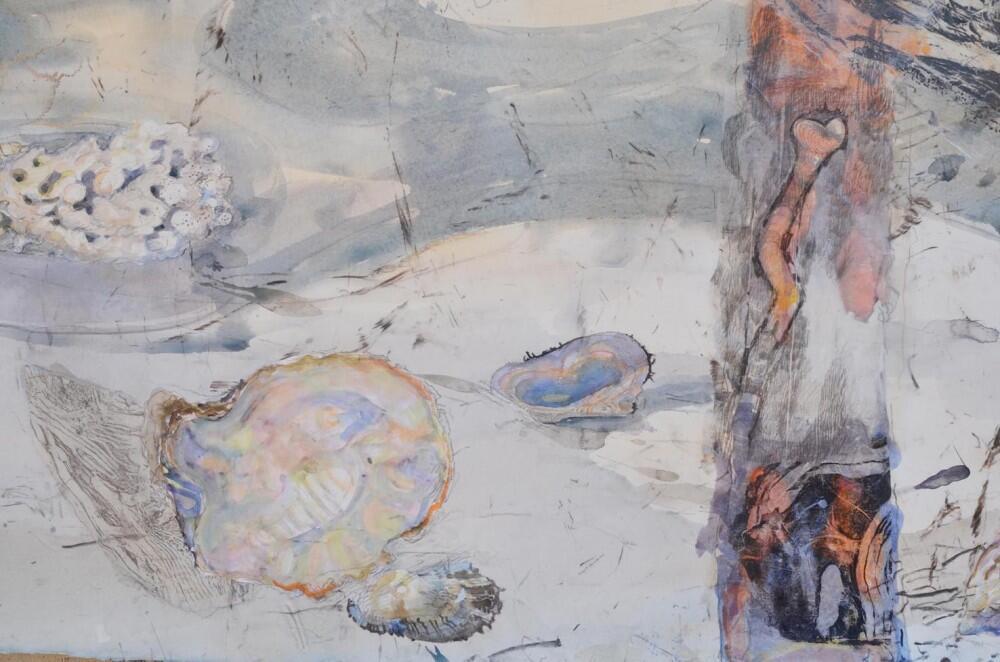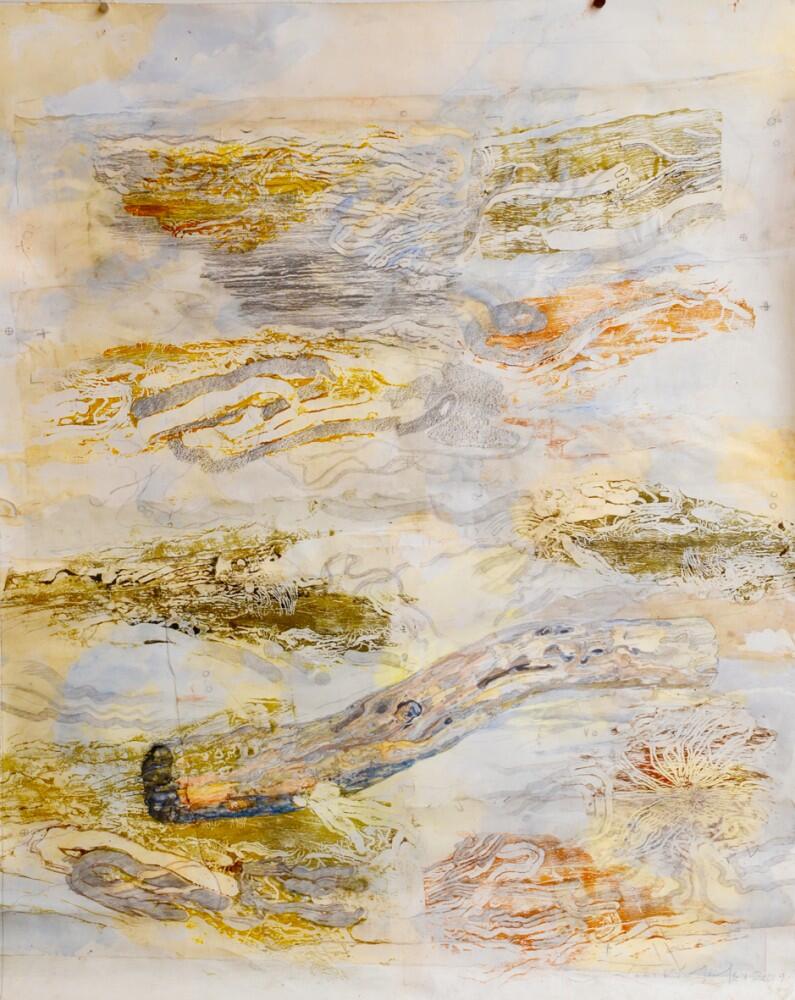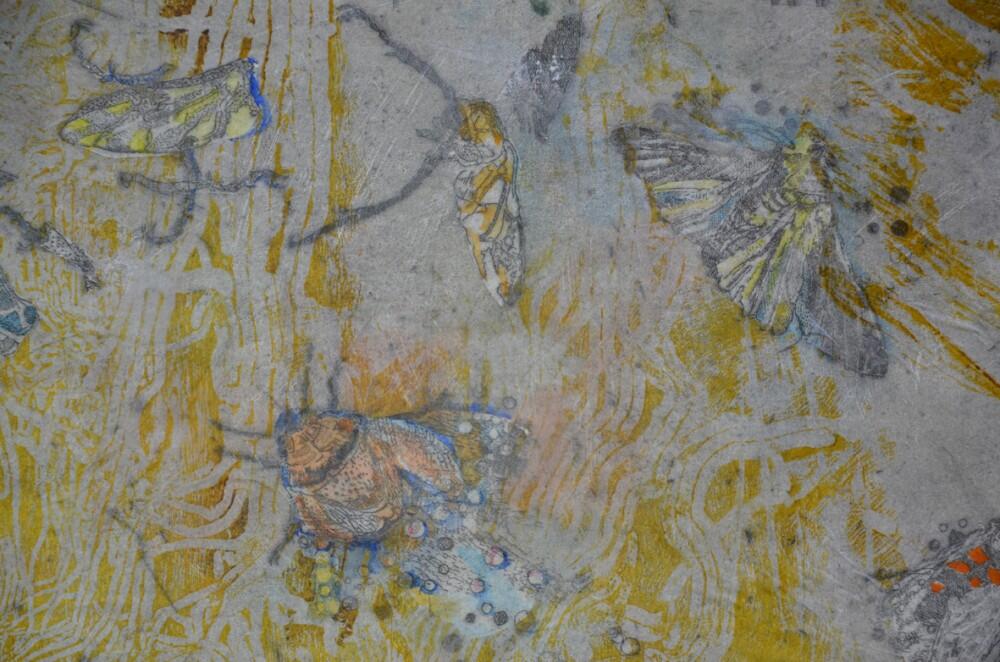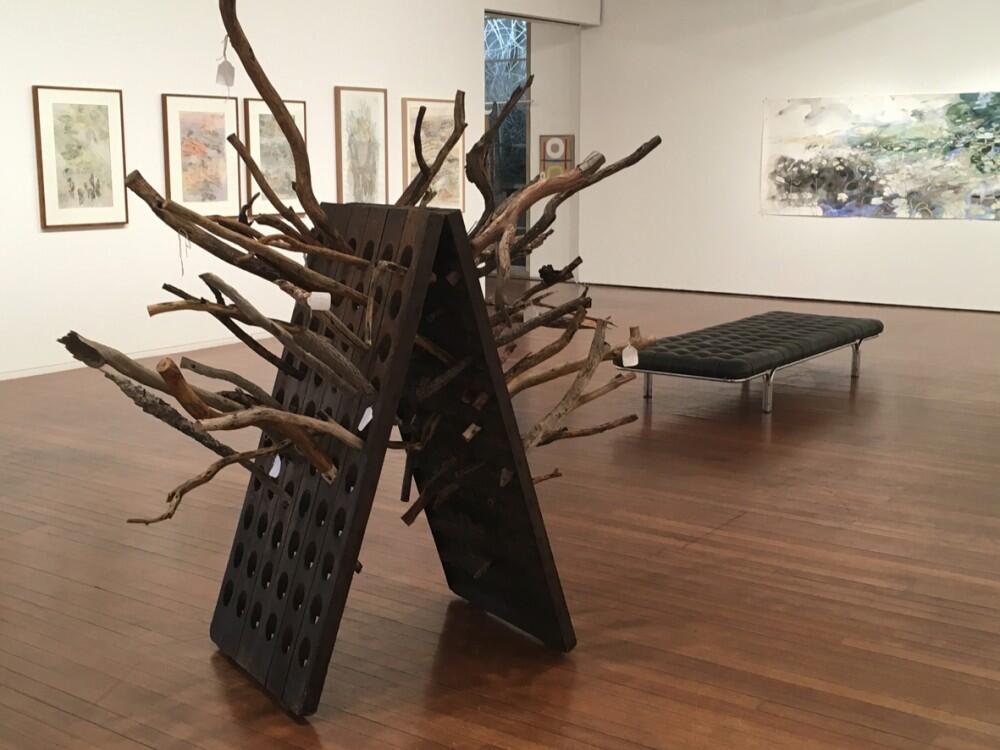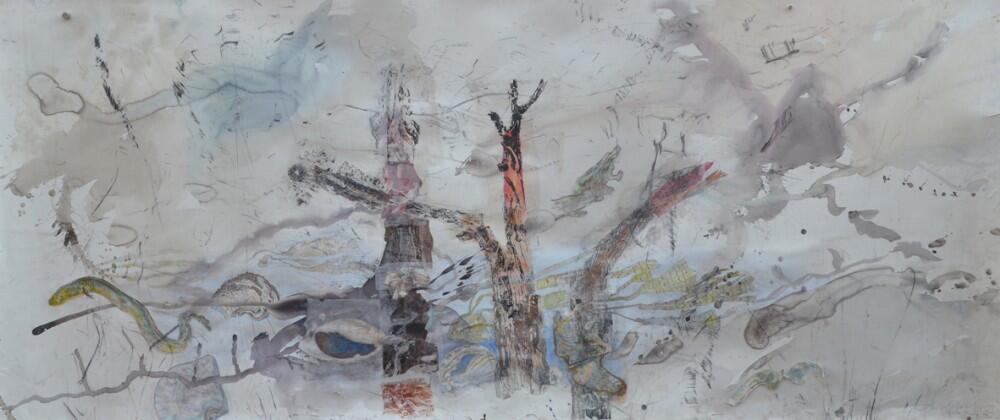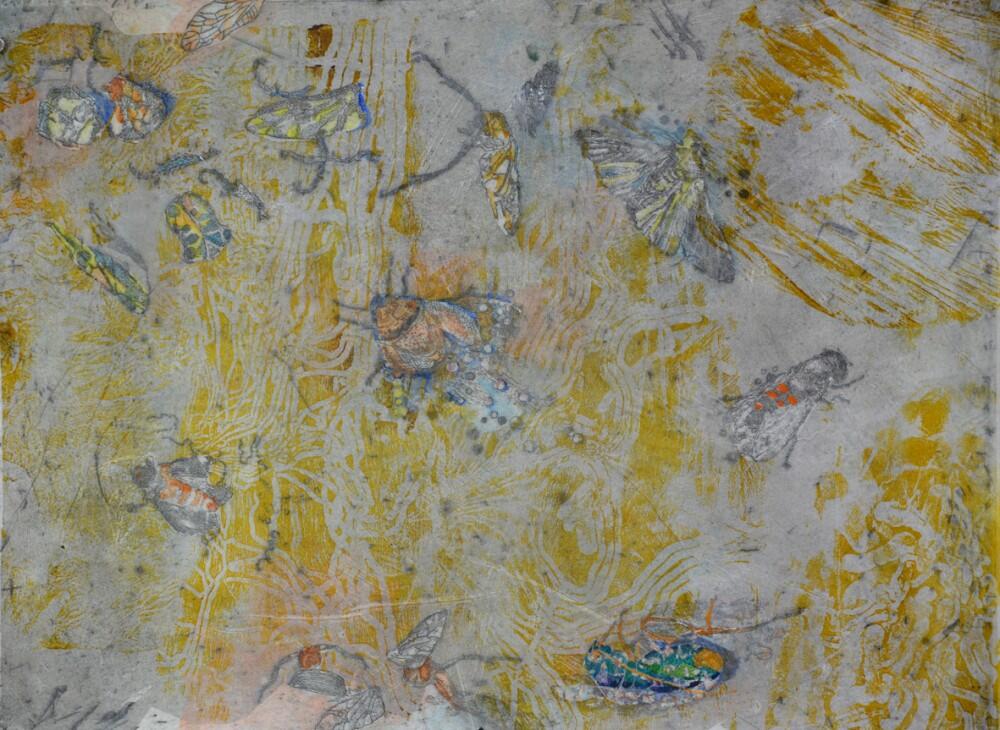
About me
I have lived and worked all over the continent from the mountains of Tasmania to the floodplains of Arnhem land. I see myself as a hybrid mix of artist and scientist; one who tries to relate the minutiae of the natural world - leaf, feather and beetle wing - to the abstract dimensions of the earth's dynamic systems. Using techniques of watercolour, collage, frottage, nature printing and other methods of direct physical or kinetic contact I am finding ways of collaborating with the actual plants, birds, trees, rocks and earth of a particular place.
I like to think that the large works on paper on which I assemble these different drawing methods represent a kind of inventory or document about the state of the earth. I want to reveal both the energy and beauty of it, as well as show its condition of critical even terminal change. My interest is to paint the processes and energy field of the living systems of this land - flocks of birds, or water plants in swamps, or the movement of sand dunes or the ways in which trees regenerate after fire.
I currently have an exhibition at Roslyn Oxley9 Gallery 101 Insect Life Stories (21 March - 13 April, 2019) and at Geelong Art Gallery, John Wolseley and Mulkun Wirrpanda - Molluscs/Maypal and the warming of the seas (30 March - 2 June, 2019) as part of ART+CLIMATE=CHANGE 2019
I have spent a lot of time in the last five years in the company of the great Yolngu artist Mulkun Wirrpanda painting the floodplains and flora of the Blue Mud Bay region of North East Arnhem Land. In 2017, the results of this collaboration were exhibited at the National Museum of Australia as Midawarr Harvest: The Art of Mulkun Wirrpanda and John Wolseley and formed the basis of a handsome book of the same name.
The exhibition and book both called: Midawarr/Harvest: The Art of Mulkun Wirrpanda and John Wolseley will be touring from late 2018-2019. The exhibition was shown at the National Museum of Australia in Canberra (23 November - 18 December) and will be on display at Melbourne Museum from April 6 - 14 July, 2019. The installation features a huge 10 metre scroll painting which includes some 40 of the hundreds of food plants which abound in North East Arnhem Land. In the last eight years Mulkun Wirrpanda has painted around 130 barks and larrakitj about the same plants. These are now installed like a forest around the painting. This unique series was made by her as a way to try and pass on her vast knowledge to future generations. As she said – ‘This is the food we ate when I was young. Back then everywhere you looked there were old people. Strong and healthy – they lived with us for a long time. Nowadays people die when they are only young. There are very few people as old as I am. Children are given rubbish food to eat. It is killing us.'
